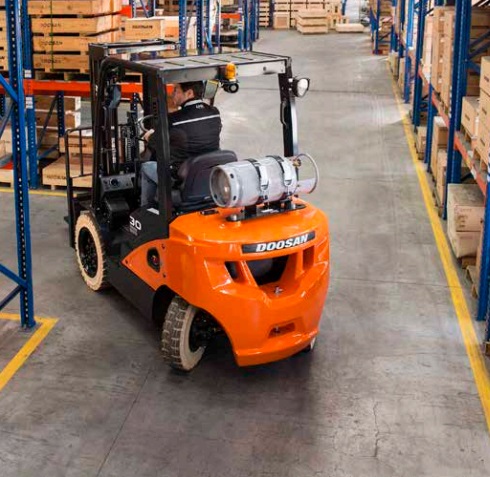
Internal combustion forklifts are essential in warehouses and construction sites, among many other settings, to move heavy materials efficiently. However, their performance and safety heavily rely on consistent maintenance.
This guide offers straightforward forklift maintenance tips. By adhering to a regular maintenance schedule, users can prevent downtime, extend the lifespan of their forklifts, and ensure they’re always ready for the task at hand. Let’s take a closer look!
Why Regular Forklift Maintenance is Essential
Maintenance is not just about keeping a conventional forklift running; it’s about ensuring it runs safely, efficiently, and cost-effectively. Here’s why regular maintenance is non-negotiable:
Safety
The paramount reason to perform regular maintenance and inspections is safety. Forklift accidents can cause serious injuries or even fatalities, not to mention costly damage to other equipment or products. Regular checks and repairs minimize the risk of malfunctions that could lead to accidents.
Cost Savings
Preventative maintenance can identify and rectify minor issues before they escalate into major problems, thereby avoiding expensive repairs and ultimately reducing overall maintenance costs. Moreover, sufficient maintenance reduces the likelihood of unexpected downtime, which can be costly in terms of both time and money.
Forklift Maintenance Checklist
To ensure your forklift remains in optimal condition, even with infrequent use, follow this detailed maintenance checklist:
Daily Inspections
- Check for any visible damage to the forklift.
- Ensure fluid levels (engine oil, coolant, hydraulic fluid) are adequate.
- Inspect tires for wear and damage.
- Test the brakes, lights, and warning devices for functionality.
- Examine the forks for any signs of damage or wear.
Weekly Maintenance
- Inspect the battery to ensure proper charging.
- Lubricate moving parts to minimize wear and tear.
- Check for hydraulic leaks and ensure hoses are intact.
Monthly Checks
- Inspect the integrity of the forks and lifting chains for any signs of damage or excessive wear.
- Test hydraulic systems for smooth operation and check for leaks.
- Verify that all safety devices, such as reverse sirens or safety lights, are working correctly.
Annual Inspections
- Schedule a professional inspection to assess engine, transmission, brakes, and electrical systems.
- Conduct a thorough check of the mast and overhead guard for structural integrity.
- Ensure compliance with all local safety regulations and standards.
Additional maintenance tips from the Canadian Centre for Occupational Health and Safety include:
- Regularly check the bolts that secure the counterweight to the forklift’s body, replacing any that are worn or missing.
- Annually inspect the main mast welds and forks for cracks or other signs of wear, utilizing magnetic particle testing for a thorough evaluation.
- Examine all hoses, couplings, fittings, and connections within the main mast assembly and the tilt control system, also using magnetic particle testing.
- Inspect the forks for any distortion, twisting, or bending. Should any defects be detected, a focused test on the affected area is necessary.
- Always verify the forklift’s ability to manage the maximum recommended load limit to prevent overloading and potential accidents.
How Often Do Forklifts Need Maintenance?
The CSA’s B335 “Safety standard for lift trucks” highlights three essential types of service report inspections, all requiring execution by a trained, qualified maintenance technician.
Planned Maintenance Inspection: This inspection should adhere to the manufacturer’s recommended interval. In instances where no forklift maintenance plan is provided, it’s advisable to conduct this inspection roughly every 200 hours of operation. This routine check can help address any potential issues before they escalate.
Annual Planned Maintenance Inspection: Occurring approximately every 2000 hours or annually, whichever comes first, this comprehensive inspection focuses on the forklift’s overall condition, ensuring that all components function correctly and safely.
Lifting Capacity Inspection: Essential for verifying that the forklift can safely handle the maximum load specified on its nameplate. This inspection should be performed before the forklift’s initial use, whenever it changes ownership, and at least once a year, following the manufacturer’s forklift service life recommendations.
Rentco: Your Trusted Partner for Reliable Forklift Rentals
Rentco Equipment Ltd. is the go-to source in the Peace Region for forklift rentals. Our fleet of well-maintained and reliable conventional forklifts and zoom boom forklifts are available for either short or long-term rentals.
When you choose Rentco, you get the peace of mind that comes with knowing that you are renting well maintained equipment that meets the highest standards of safety. Backed by flexible rental terms and comprehensive support, our commitment to quality and customer service ensures that you have access to the best equipment solutions, allowing you to put all of your focus on your project’s success.